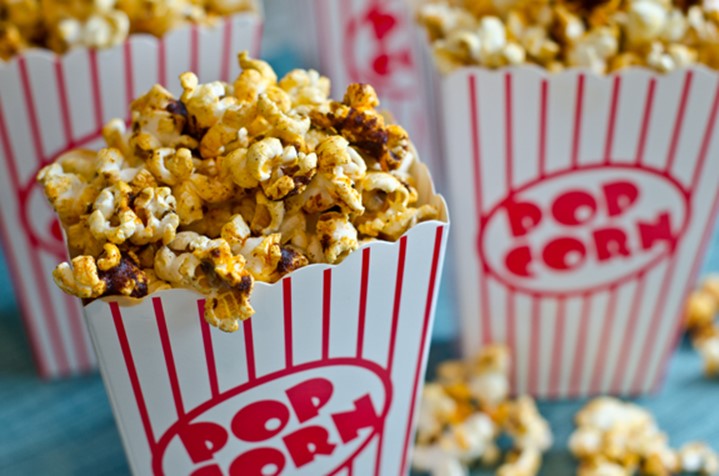The Economics Of Popcorn
October 6, 2013 in Daily Bulletin

We’ve previously covered the rise of popcorn in movie theaters as told by the users of Reddit. Now the possibly more reliable Smithsonian has published an article taking a wider look at the topic by Natasha Geiling:
- In 1848, a time before society had the good sense to invent the Xbox, watching popcorn pop was apparently a form of entertainment and thus was a popular addition to circuses and fairs.
- Its mobility also helped. Steam powered popcorn makers could serve customers anywhere.
- The aroma of popping popcorn would lure customers further driving its adoption.
- At the time movie theaters sneered at popcorn. They were still emulating classical theaters and thought popcorn to be a snack for the commoners, not the highbrow patrons they attracted. Besides, think of the carpet.
- But with the end of silent films, literacy was no longer a requirement at the theaters and movies became a popular pastime for everybody – including the lower classes.
- During the Great Depression popcorn was an affordable snack. A $10 bag could last for years. And so moviegoers would purchase popcorn from street vendors before going in.
- Theaters, for their part, tried to prevent this by asking patrons to check in their coats and their popcorn.
- After a while though theaters realized it’d just be easier to make money by selling popcorn themselves.
- And anyway during WW2 rationing meant that the sugar used in candy and sodas was too expensive and thus there really weren’t any other snacks left.
The full articles talks about a lot more including the rise of yellow over white popcorn, how television almost ruined popcorn and more over here.
Source: Smithsonian
Join the Discussion! (No Signup Required)